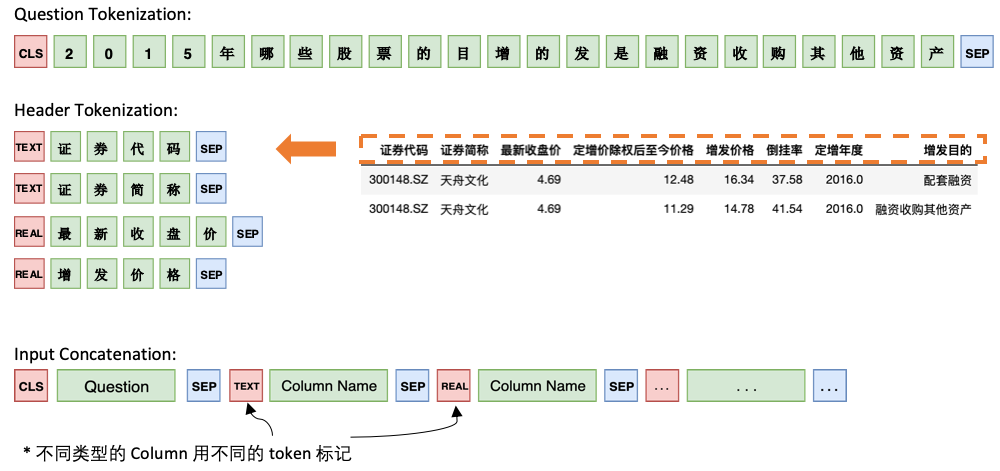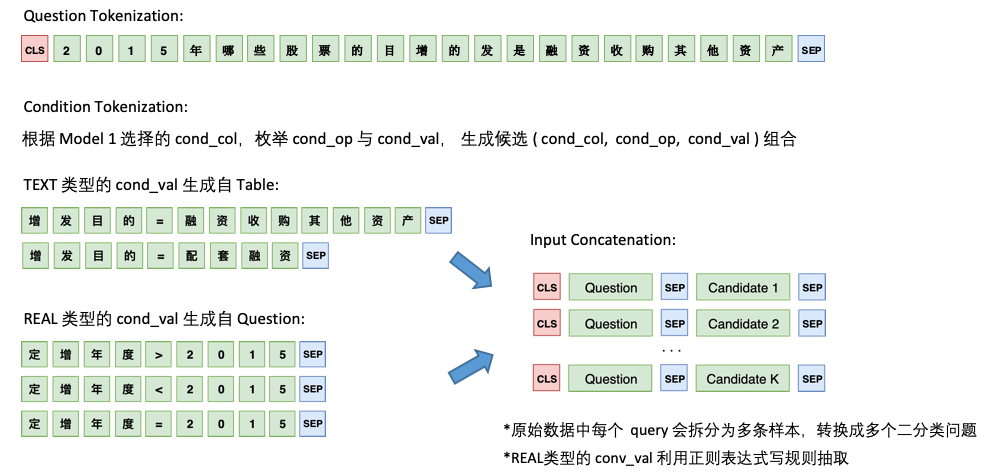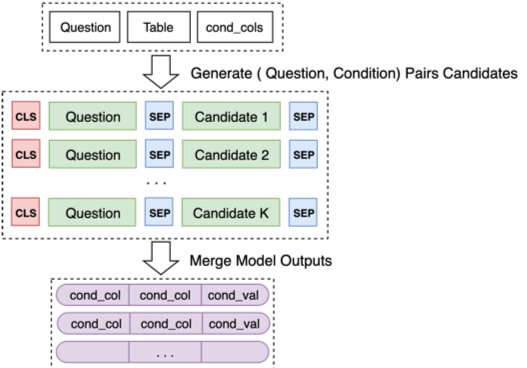beader / Tianchi_nl2sql
Labels
Projects that are alternatives of or similar to Tianchi nl2sql
首届中文NL2SQL挑战赛
⚠️ 由于可能存在的版权问题,请自行联系竞赛平台或主办方索要竞赛数据,谢谢!
💡 代码运行环境至文末
成绩
本项目所采用的方案在复赛中的线上排名为第5,决赛最终成绩排名第3。
主分支下的代码以 jupyter notebook 的形式呈现,以学习交流为目的,对原始的代码经过一定的整理,并不会完全复现线上的结果,但效果不会差太多。
code 目录下的 model1.ipynb 与 model2.ipynb为建模流程,nl2sql/utils 目录则包含了该任务所需的一些基础函数和数据结构。
致谢
- 感谢追一科技的孙宁远对本次比赛做了细致的赛前辅导
- 感谢追一科技研究员、科学空间博主苏剑林,分享了大量关于NLP方面的优质博文。本方案受到了基于Bert的NL2SQL模型:一个简明的Baseline这篇文章的启发。项目中使用的 RAdam 优化器的实现直接来自于苏剑林开源的 keras_radam 项目
- 感谢 CyberZHG 大神的开源项目 keras-bert,本次比赛中我们使用了 keras-bert 构建我们的模型。
- 感谢哈工大讯飞联合实验室的 Chinese-BERT-wwm 项目,本次比赛中我们使用了他们
BERT-wwm, Chinese预训练模型参数
背景
首届中文NL2SQL挑战赛,使用金融以及通用领域的表格数据作为数据源,提供在此基础上标注的自然语言与SQL语句的匹配对,希望选手可以利用数据训练出可以准确转换自然语言到SQL的模型。
模型的输入为一个 Question + Table,输出一个 SQL 结构,该 SQL 结构对应一条 SQL 语句。
其中
-
sel为一个 list,代表SELECT语句所选取的列 -
agg为一个 list,与sel一一对应,表示对该列做哪个聚合操作,比如 sum, max, min 等 -
conds为一个 list,代表WHERE语句中的的一系列条件,每个条件是一个由 (条件列,条件运算符,条件值) 构成的三元组 -
cond_conn_op为一个 int,代表conds中各条件之间的并列关系,可以是 and 或者 or
方案介绍
我们将原始的 Label 做一个简单的变换
- 将
agg与sel合并,agg中对表格中每一列都做预测,新的类别NO_OP表明该列不被选中 - 将
conds分为conds_ops与conds_vals两个部分,这么做的原因是想分两步进行预测。由一个模型先预测conds需要选取哪些列以及操作符,再由另一个模型预测所选取的列的比较值
Model 1
Model 1 将 Question 与 Header 顺序连接,在每个 Column 之前添加一个特殊标记,TEXT 或 REAL,这两个特殊的 Token 可以从 BERT 预留的未训练过的 Token 中任选两个来代替。
Model 1 的架构如下:
Model 2
Model 2 则负责 cond_val 的预测。我们的思路是根据 Model 1 选择的 cond_col,枚举 cond_op 与 cond_val,生成一系列的候选组合,将这些组合当成多个二分类问题来做
Model 2 的架构如下:
最后将 Model 2 对一些列候选组合的预测合并起来
模型训练中的一些探索尝试
关于模型训练中的优化,以及一些成功、不成功的 idea,详细可以见我们决赛答辩ppt。
代码运行环境
深度学习框架: tensorflow, keras
具体版本见 requirements.txt
更方便的做法是在 Docker 中运行。比赛中用了如下 Docker 镜像
| REPOSITORY | TAG | IMAGE ID |
|---|---|---|
| tensorflow/tensorflow | nightly-gpu-py3-jupyter | 6e60684e9aa4 |
由于需要用到 python3.6,使用了 tensorflow nightly build 的镜像,我将比赛时用的镜像传到 docker hub 上了,可以通过如下命令获取。
docker pull beader/tensorflow:nightly-gpu-py3-jupyter








